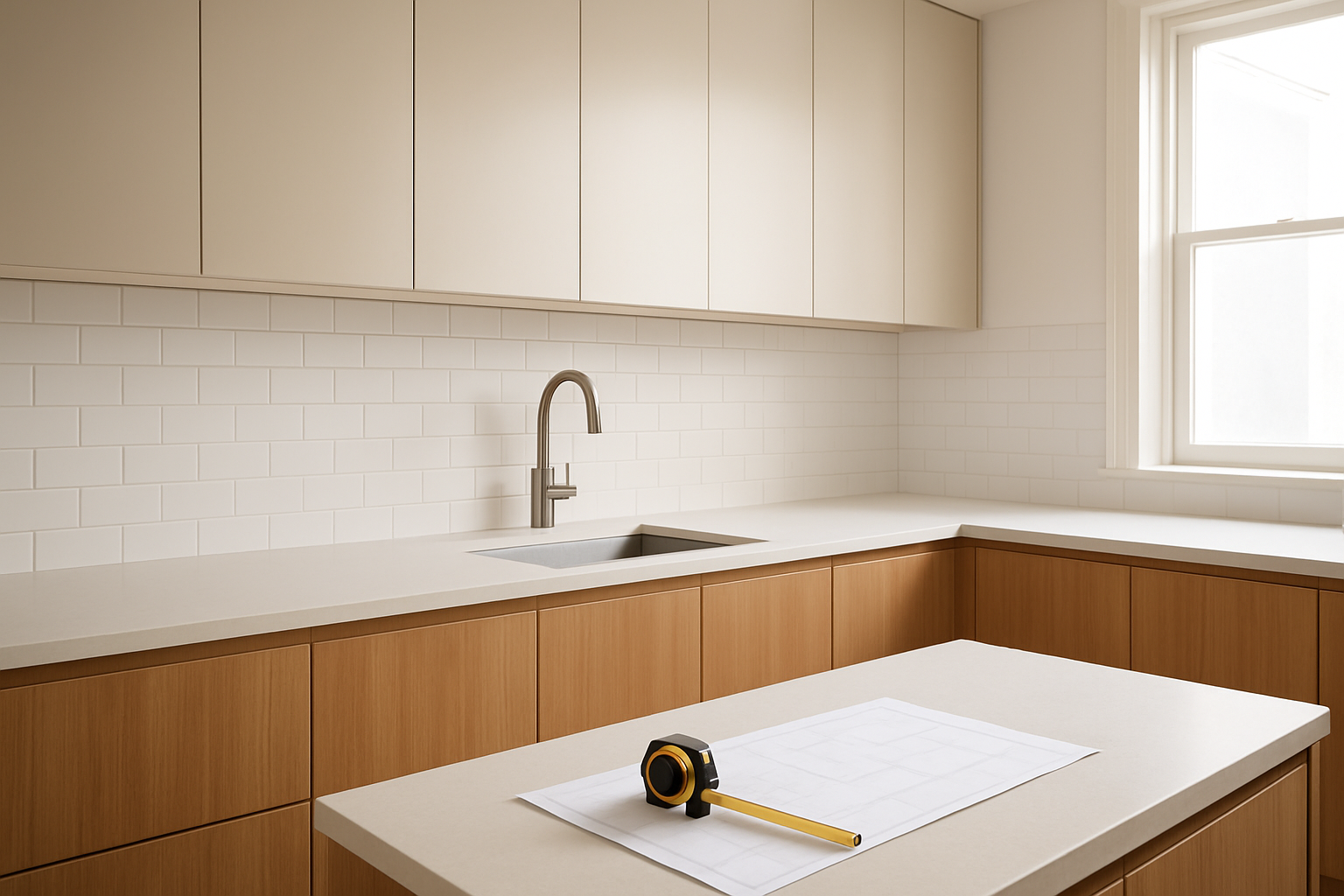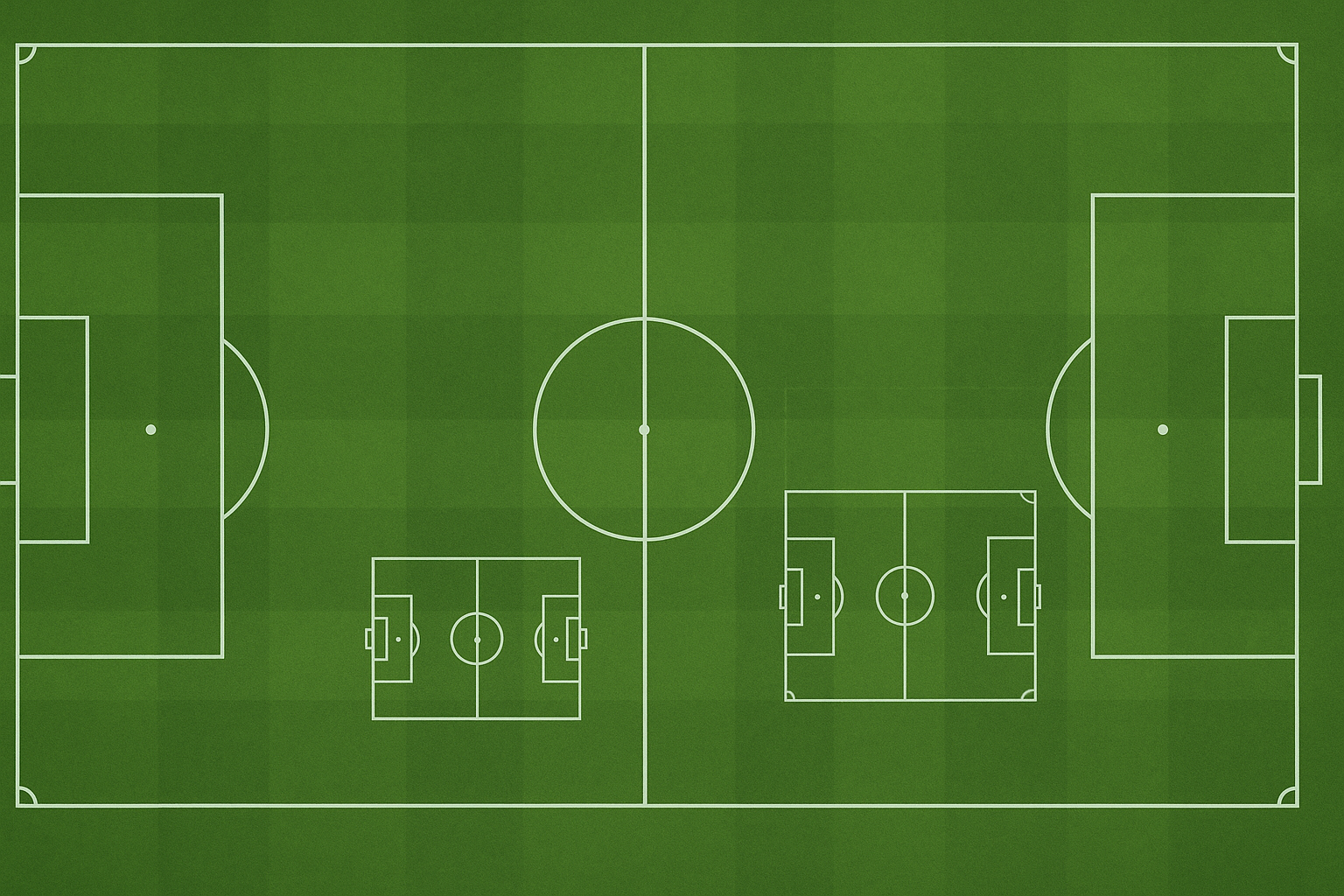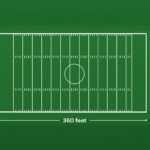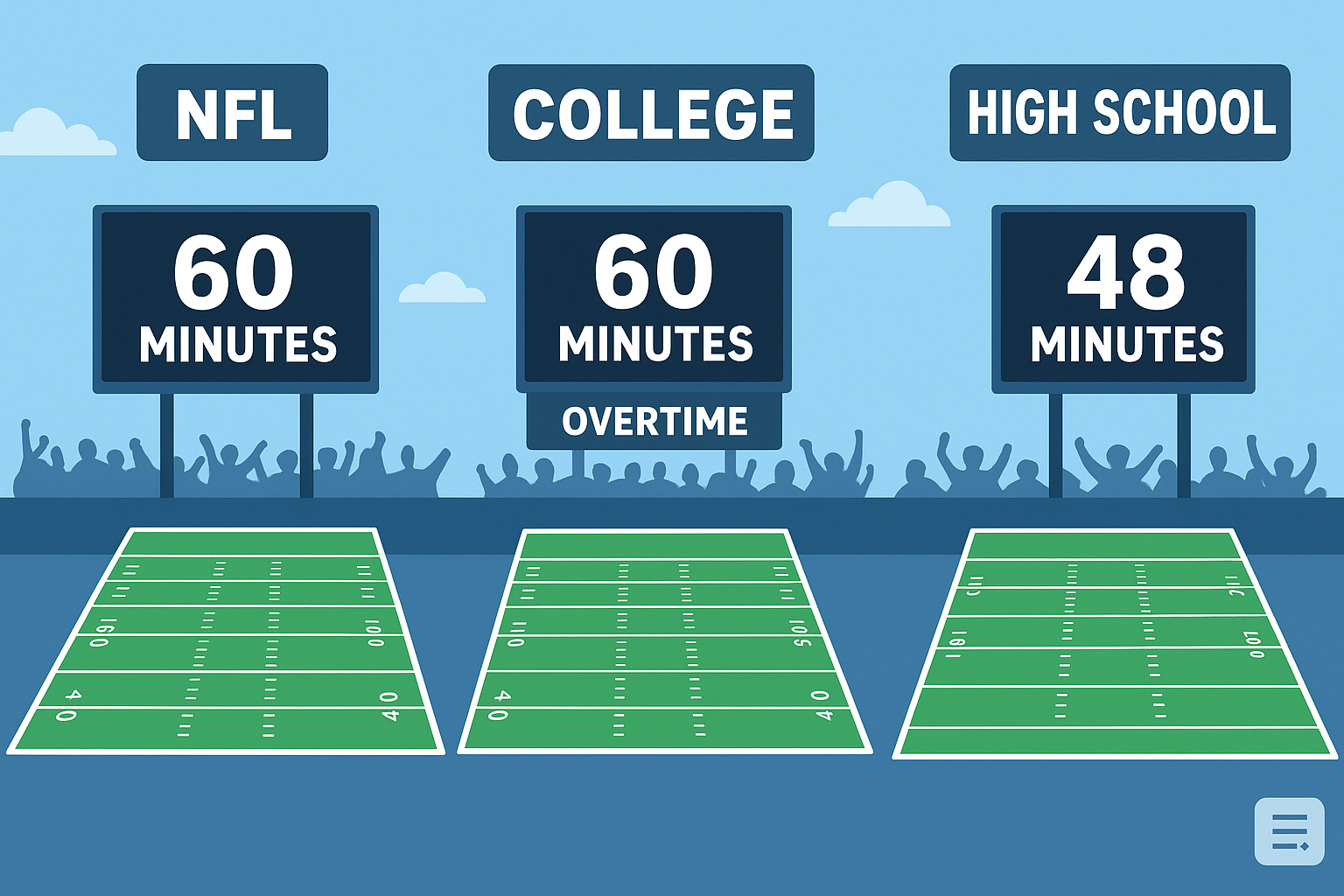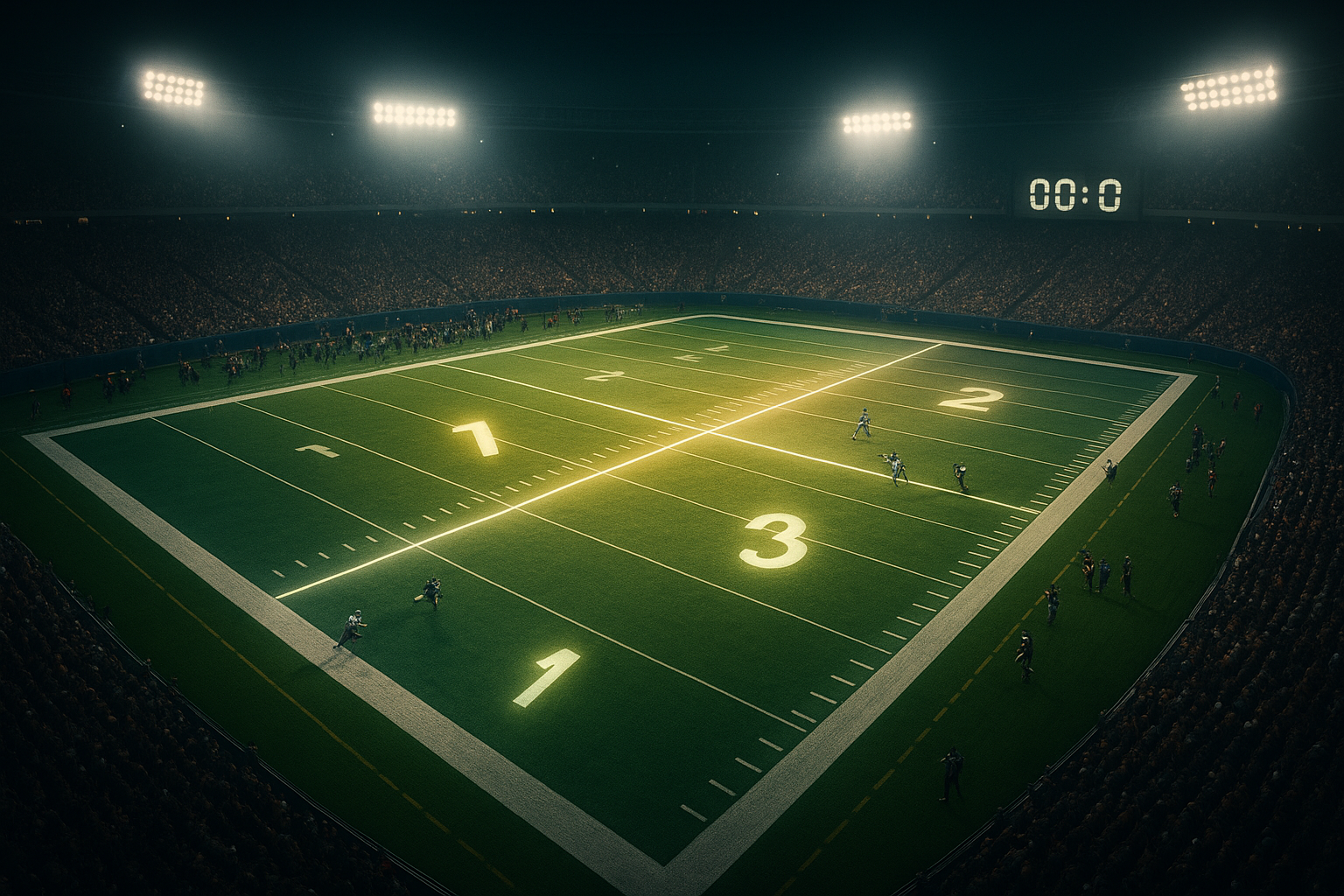If you’ve ever watched a soccer match and noticed the pitch seems slightly bigger — or smaller — than the one you played on in school… you’re not imagining things. Soccer field dimensions are not fixed. They vary based on age group, competition level, and even stadium space. That’s part of what makes the world’s favourite sport so versatile — from neighbourhood parks to international arenas.
But how big is a standard soccer field really? And why isn’t there a universal size?
Let’s break it down clearly, using measurements that actually make sense.
What Are Standard Soccer Field Dimensions?
A regulation adult soccer field has a length between 100–130 yards (90–120 meters) and a width between 50–100 yards (45–90 meters).
That’s the official range allowed by global football authorities.
For major international matches, the measurements tighten to:
- Length: 110–120 yards (100–110m)
- Width: 70–80 yards (64–75m)
In simple terms:
A standard soccer field is larger than a football field and its size can change depending on competition rules.
This flexibility ensures clubs with different stadium capacities can still host matches that follow the same sport laws.
Why Do Soccer Field Dimensions Vary So Much?
Unlike sports such as American football or basketball — where playing surfaces are identical everywhere — soccer’s history is rooted in adaptability. When local clubs first formed in Europe, fields were mapped around whatever land was available: farms, public grounds, even sloped terrain.
That tradition influenced the modern rulebook:
- Some teams benefit from narrower fields — ideal for defensive play
- Attack-driven clubs prefer wider fields — more room to stretch opponents
- Stadium architecture sometimes determines sizing
- Weather, turf conditions, and region influence surface choices
This creative freedom adds strategy to the sport — dimensions can shape gameplay.
Boundary Lines: Touchlines vs Goal Lines
To understand soccer field dimensions, two key terms matter:
- Touchline → the long boundary (length of the field)
- Goal line → the short boundary (width of the field)
Everything inside those boundaries follows precise geometry:
center circle, penalty area, goal box, arcs, and more.
These markings ensure fairness no matter the field size.
How Big Is a Soccer Field Compared to a Football Field?
Here’s a simple mental picture:
- Soccer fields typically cover 1.8–2.7 acres
- A full American football field is about 1.32 acres — slightly smaller
If you’ve read our guide on how many acres is a football field?, you already know how widely these measurements are used in construction, stadium design, and land planning.
This is why international soccer matches feel more open — there’s far more space to run, create, defend, and press.
Soccer Goal Dimensions: Same Everywhere
There is one measurement that never changes:
- Width: 8 yards (7.32 meters)
- Height: 8 feet (2.44 meters)
From grassroots to the World Cup final — the goal remains the same size.
That consistency allows young players to dream big — literally.
Youth Soccer Field Dimensions by Age Group
Kids play on smaller pitches for safety and proper skill development. Here’s how field size scales:
| Age Group | Field Size (Approx.) | Players |
|---|---|---|
| U6 | 15–30 yards wide / 25–35 yards long | 3v3 / 4v4 |
| U8 | 20–35 yards wide / 35–55 yards long | 4v4 / 5v5 |
| U10 | 30–55 yards wide / 50–75 yards long | 7v7 |
| U12 | 40–55 yards wide / 70–90 yards long | 9v9 |
| U14+ | Transition to full-size field | 11v11 |
This progressive sizing helps young athletes master control, spacing, and tactical awareness step by step.
Playing Surface Standards: Grass vs Turf
A soccer field can be:
- Natural grass — preferred by professionals due to playability + comfort
- Artificial turf — better for durability and weather resistance
Minimum quality standards exist for all official competitions:
- Safe traction without injury risks
- Consistent ball bounce and roll
- Proper drainage
- Adequate shock absorption
The sport is played globally — from rain-soaked pitches in England to turf fields in school stadiums across the US — so regulation allows the game to thrive everywhere.
Dimensions of Key Field Markings
Even when pitch size changes, major markings stay standardized:
- Penalty Box: 18 yards deep × 44 yards wide
- Goal Box: 6 yards deep × 20 yards wide
- Center Circle Radius: 10 yards
- Penalty Spot: 12 yards from goal line
- Corner Arc: 1-yard radius
These precise distances control how the game flows — from spacing during free kicks to defensive positioning.
How Dimensions Influence Strategy and Play
Different pitch styles create different football identities:
- Wide Fields → Fast wingers thrive, high pressing hurts opponents
- Narrow Fields → Compact defending, slower build-ups, long balls become common
- Long Pitches → More room behind the defense = more counterattacks
- Shorter Fields → Faster transitions because distances shrink
Clubs even tailor squad selection to pitch size — home-field advantage isn’t just fan noise.
If you’re interested in how gameplay structure works across four quarters and added time, you can check the contextual breakdown in How many quarters are in football? — which helps compare how different sports use field space and time.
Why Accurate Soccer Field Dimensions Matter
This isn’t just for rule nerds. Measurements impact:
- Player safety
- Stadium engineering
- Youth development consistency
- Broadcasting + fan visibility
- Professional match fairness
Every painted line supports the sport’s integrity.
Final Takeaway: Soccer Field Dimensions Aren’t One-Size-Fits-All
So, what should you remember?
- Soccer fields vary, but official adult ranges are 100–130 yards long and 50–100 yards wide
- International matches narrow that range for consistency
- Goals are always the same size, no matter the level
- Youth fields scale logically to promote development
- Pitch dimensions can change match tactics dramatically
This flexibility is part of what makes soccer the world’s game — adaptable to any environment while still honouring the same rules.
From the smallest community pitch to the glimmering stadiums of global tournaments — the dimensions may change, but the passion never does. ⚽







